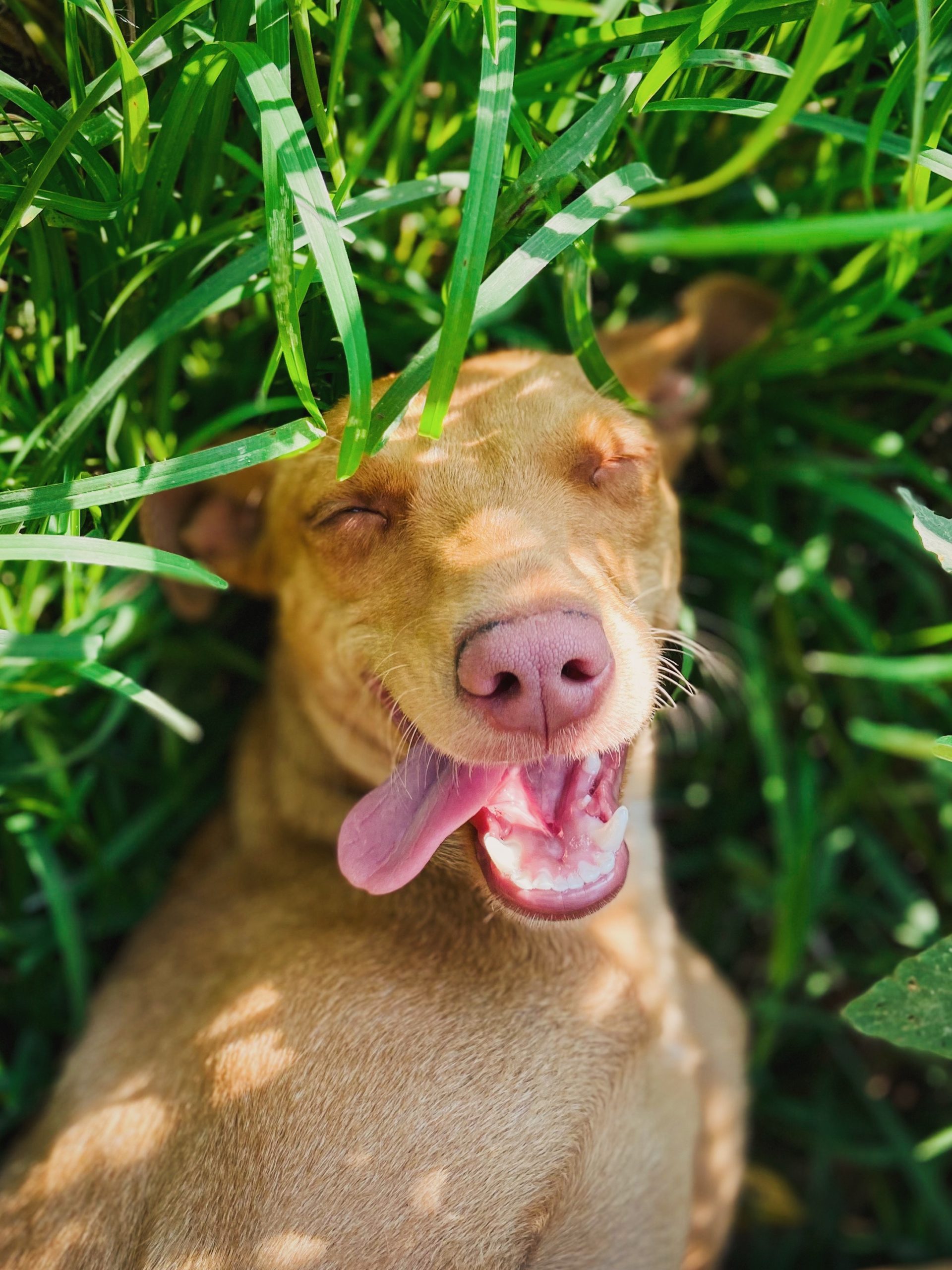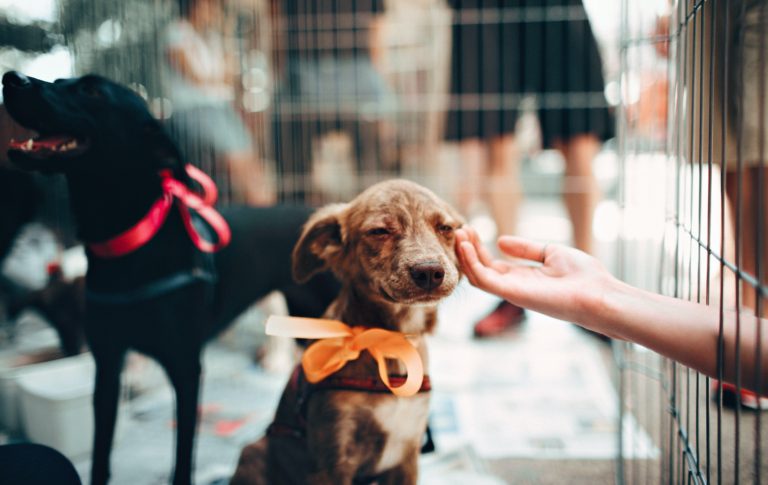
Prevention is "Top Dog"
We’ve all heard the expression (unless I’m just dating myself) “An ounce of prevention is worth a pound of cure.”
Doggone right!
When caring for your dog, I’ve learned that it really is all about taking those prevention measures when it comes to dog safety.
Many, many years ago (dating myself here again) I took a “time out” and worked at a dog day care center. I wanted to gain some experience with different breeds of dogs and to apprentice as a dog trainer.
What a notable time!
First, this is where I met my, still to this day, best friend. She happens to be of the two legged variety.
Second, I sure gained experience all right. I experienced being jumped on, knocked over, dragged around and yes, peed on. All good.
Third, this is also where I began to learn the whole “ounce of prevention” thing when it comes to dogs.
In every day conversation with the people bringing in their dogs, it was amazing to learn of so many problems, accidents and downright tragedies. So many of which may never have happened if basic prevention measures for dog safety were taken.
So many of the conversations left me saying things like, “How would you even have guessed that that could happen?”, “Who knew that was even possible?”, “Why wouldn’t the packaging indicate that it’s toxic?”.
That was the worst part. Some of the tragedies were the result of some seemingly innocent, every day activities.
These things have stuck in my head for so very many years. Throughout said years, I have told many of these stories to both new dog owners and seasoned ones alike, hoping to prevent them from ever happening again.
And of course, by sharing these natural prevention measures for dog safety, I want to spare you and your pup the pain of a senseless tragedy, “if only you’d known”.
5 Natural Prevention Measures for Dog Safety
Dog Collars and Tags
Crates, yes! Wearing a collar and tags in them, no! Many a poor dog has had their collar and/ or tags get twisted and stuck in the holes of the crate, wire and plastic alike. This can lead to your dog suffering in a very uncomfortable position for a very long time, and even worse (like the story I was told), strangulation and death.
And this doesn’t just happen in a crate as I found out.
I came home one day to find our rescue girl, Daisy (who also answers to Duck, Miss Tupelo, Duke, Hound Duck, Maisel, and I could go on), with a very stretched out jump ring on her collar. Further investigation yielded a very twisted up bedspread in the “kid’s” room (yes, she thinks the bed in the spare bedroom is hers and I haven’t the heart to tell her it isn’t. Because it pretty much is. Hers now. All Hers.)
Apparently the jump ring had snagged the bedspread and she must have pulled and tugged until she freed herself.
Thank you, Lord, for keeping her safe.
I could tell she was definitely “off” when I came home. She stuck very close to me for awhile and then slept all day. Which she never does.
It pains me to think of the struggle and possible panic she was feeling. Although I knew the fatal tag-caught-in-the-crate tragedy, I never thought about it getting caught on a blanket!
Unless I am actively home and watching my dogs, I now take their collars off. This is such an easy prevention method to keep your pup from unnecessary harm.
I also only use quick release and martingale collars embroidered with their name and phone number on them. This eliminates the need for tags, while still having the necessary ID info.
Still Waters, Deep Trouble
A hot summer day, your dog, his tennis ball and an afternoon off…and you’re off to the river to a popular local swimming hole. What a great day!
Until it becomes a nightmare.
In this told tragedy, mom would lob her dog’s tennis ball into the water. Much to his delight, he’d launch himself off the bank to retrieve it. After this happened successfully a few times the dog launched himself one final time and landed on a stick that was below the surface of the water, impaling himself.
I can’t begin to imagine the horror that ensued. Enough said.
You can avoid this tragedy and keep your pup safe during a much loved activity. Always know what’s below the surface of any body of water. Even if no trees are nearby. You never know what could be underneath!
Toilets are not water bowls. Keep the lid down.
And the tragedy of the dog used to drinking out of the toilets at home…
His family took him camping to a rental cabin. After a long ride and exploring his new surroundings, the dog ran in for a long drink of water out of the toilet. Unknown to the dog parents, the cabin owner had put antifreeze in the water lines and toilet to prevent frozen pipes in case of a late spring freeze.
Again. Horror.
Even if antifreeze isn’t an issue, there are so many other chemicals people use that can be just as toxic and deadly. Check out my post on household cleaners here.
Always have your local emergency veterinary clinic and the ASPCA Animal Poison Control Center phone number (888) 426-4435, or the Pet Poison Helpline nearby. These numbers are programmed in our phones and I feel a measure of comfort knowing that it’s one less step to have to look them up in the middle of a crisis.
I also always have activated charcoal and ipecac on hand. These are two good remedies that can possibly help get you through until you are able to get to your emergency vet. Be absolutely sure, however, which one is safe to use in your specific situation. Giving the wrong one can make it worse for your pet.
So close that toilet lid and retrain your pup to drink from a safe and dedicated for-the-dog-only water bowl. (Preferably a stainless steel one without lead or plastic chemicals.) Stave off the possible ingestion of unsafe chemicals.
Bloat is Deadly! Prevention is definitely key.
Why had I never heard about bloat?
Your dog is working your cows back and forth along the fence line (ok, maybe your dog is working her tennis ball). Her tongue is as fat and flat as a pancake. She comes running in to her water bowl (not the toilet) and is lapping water up like mad, huffing and puffing. A short while later you notice her stomach blowing up like a balloon.
Thank you again, God, that this is not a scenario I’ve experienced.
But, tragically, so many others have. I’ve heard the brutal stories of more than two handfuls of heartbroken people.
Gastric dilation valvular or GDV.
This can happen in an instant and goes south even faster.
Bloat is a fatal condition if you do not get to the emergency vet immediately for surgical intervention. When the dog’s stomach fills with gas, fluid and/or food, it can cause the stomach to twist and block anything from going in or out. It places pressure on other organs and stops blood flow and will cause death if not surgically corrected.
Any dog owner that thinks “it’ll go away” or “it’s just indigestion” or “I’m not spending money on a huge vet bill” should read about GDV and be sufficiently aware of the horrible details of what happens to a dog with bloat.
Enough said there too. Horrifying.
What are the symptoms of bloat?
Here are some signs you may see in a dog with early stages of bloat:
- panting or rapid breathing
- drooling
- Swollen or distended abdomen, may be painful to the touch
- Restlessness or pacing
- Retching and unsuccessful attempts to vomit
What do you do if you even slightly think your dog has bloat?
Prevent a catastrophe…get them in the truck immediately and start driving. Use that number you preprogrammed for the emergency veterinary hospital. Tell them you’re on your way with a bloat patient.
I also keep on hand at least two homeopathic remedies, Boiron’s carbo vegetabilis and nux vomica in 30c and/or Gasalia. You can administer these remedies on your way, but know that they will not save your dog. They may help prevent a faster onslaught, but WILL NOT save them from bloat.
The most important thing is to get rolling to the emergency vet immediately!
Remember this, there is nothing that is going to save your dog from bloat besides surgery and getting there quickly and safely is absolutely crucial.
The people that went through it all said similar things… it seemed like it was going to pass, they weren’t sure what it was, their dog often got into garbage so they thought it was nothing, they gave them antacids and thought it would work.
What they also tragically all said was that by the time they realized it was serious, it was just too late. By recognizing the symptoms, a trip to the vet may have been able to prevent a very final and heartbreaking outcome.
There is no turning back that clock!
It’s better to be safe than sorry. If you get your dog in your car and on the way he vomits and it turns out he’s fine after a quick check up, then you’ll be back on your way home in no time… With your living, breathing, furry loved one.
What are some prevention measures to keep bloat from happening? (Remember the focus of this blog? Prevention?!)
- Down time. You should not let your dog run, jump or play for an hour before or after meals. While there is some debate over the length of time that is safe, I err on the side of caution. I have two big and broad chested dogs and I am NOT taking chances. So an hour it is. When my dogs get riled up after eating and want to play tug, they know what “Let your belly settle!” means. They go lay down.
- Feed on the floor. Keep food and water dishes on the floor and do not elevate them. Once upon a time it was suggested that raised feeders/waterers would help to prevent bloat. In the last few years, studies have shown that elevating dog dishes has actually contributed to GVD.
- Stop the gulping. Don’t let them gulp lots of water or food when they are thirsty or hungry. If you have a speed eater, check out slow feeding bowls. When our dogs have just had a big run or a ‘play date’ with the neighbor’s pup, I only give them a very small amount of water and ration it out slowly. Only when they aren’t panting like crazy and they’re ready to relax do I give them more.
Peanut Butter can be Deadly too! Wait, what???
I am all for table scraps! Not necessarily from the table, ahem, but there are so many “people foods” that are so nutritionally beneficial for your dog.
And peanut butter? Especially if it’s a one ingredient organic almond butter? What a great way to keep your dog happy and busy by filling marrow bones or other interactive toys with it!
It’s not the peanut butter that’s bad.
It’s an ingredient that may be in there.
It’s called Xylitol, also known as birch sugar, or lumped in under the heading of “sugar alcohols.”
Xylitol and it’s counterparts are in hundreds of foods, and not just in sugar-free foods.
VCA Hospitals have reported that it is 100 times more toxic than chocolate even in very small amounts.
Imagine this, you drop a few chewable vitamins on the floor and your dog scarfs them up. You figure it’s no biggie because he’s 80 lbs and an adult serving is 2 chews, so you don’t think much of it. Until. Thirty minutes later, your dog is staggering around and looks like he can’t stand up. And then he can’t. He collapses and starts seizing.
Again, I can’t imagine the horror that ensued. But it did.
And all because the dog’s mom didn’t know about xylitol.
Why is xylitol bad for dogs?
Although considered safe for humans, this sugar substitute is toxic to dogs. When they ingest it, the xylitol is rapidly absorbed into their blood stream. This tricks their pancreas into producing a surge of insulin which drops their blood sugar. They become hypoglycemic. The end result can be liver failure. While this is the very simplistic explanation, you can read more about xylitol here. To sum it up, taking all precautionary measures to keep your dog safe from ingesting this deadly ingredient in the first place is absolutely life-saving!
How long does it take for symptoms to appear?
The first symptoms can appear 15-20 minutes after ingestion but can take up to 12 hours! At that point, it’s quite possibly too late to fix.
What is Xylitol in?
Xylitol is not only found in many sugar-free/low-sugar foods, but can be found in many common foods and products such as the following:
- Peanut butter
- Toothpaste
- Chewing gum and candy
- Drink powders and mixes
- Chewable vitamins
- Ice cream (including that in many big chain fast food places)
- BBQ sauces and ketchup
- Pancake syrup
- And so much more!
What do you do if you’ve suspected your dog ate something with xylitol?
Even if it seems like it was only a very small amount, please call your emergency veterinary clinic that you have programmed in your phone. Let them know what and how much your dog has ingested and how much they weigh. If possible, bring the label of what your dog ate with you to the vet.
If someone is with you, have them get the car ready so you can get rolling if need be.
You can also call the ASPCA Poison Control Center or Pet Poison Helpline programmed in your phone.
So how can you prevent Xylitol poisoning in the first place?
- Read Labels! Know what you are bringing into your house. If a label says Xylitol, Birch Sugar, or sugar alcohols, avoid having your dog near it! Dogs do not digest any sugar well and it can lead to other issues down the road for them. So any sort of sugar or sugar substitute, I’d just steer way clear!
- Teach the “Leave It” Command. This command has saved my (and my dog’s) you-know-what many many times. This command is a MUST! We “play” “Leave-it” every day and the dogs love it. An even bigger bonus is if something gets dropped on the floor, they aren’t going to scarf it up. They usually look to me now first, because they know that when they leave whatever it is I’ve dropped, we’re going to have a “party” with lots of even better treats!
- Teach others not to feed your dogs unless they ask you first. Oftentimes kids and non-dog owners simply aren’t aware that certain foods can made a dog sick or even cause death. Forgetting that rule last summer during a picnic, I turned just in time to see my dog just about to be “treated” with a piece of very rich chocolate cake that I had made with pure dutch cocoa. Again, thank you God. The timing was literally miraculous. Another 2 seconds and I may not have seen it and the results could’ve been disastrous. A beautiful day could have turned into a nightmare all because I assumed that everyone there knew what was safe for dogs.
Be sure to sign up in the pop-up for my free “Foods that are Dangerous to Dogs” Checklist to make sure there aren’t any other food hazards you aren’t aware of.
Bottom Line on Dog Safety
You are your dog’s advocate! By putting into practice these five prevention measures for dog safety, it can help you advocate for your dogs and others!
I fully believe that getting to share my life with my dogs is such a privilege. This privilege comes with the full responsibility of providing a safe and happy environment for everyone. Education, training and play, rest and recovery and full financial commitment to all of it, is a must. I know that this can be very difficult. BUT. Prevention is definitely clutch! By knowing what to look out for, heading off problems before they come is a much better way to go!!!
How beautiful is it to find someone,
who asks for nothing but your company.
Unknown

